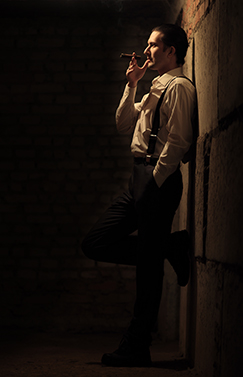
Slow burners and page-turners
It’s not just in the movies that cigars are used to show personality...
It’s not just in the movies that cigars are used to show personality. Authors have been creating characters that enjoy nothing more than a few puffs of tobacco for decades. From the famous curled pipe of Sir Arthur Conan Doyle’s Sherlock Holmes (conspicuously absent in the Benedict Cumberbatch TV depiction of the hero), to the elegance of Holly Golightly in Capote’s Breakfast at Tiffany’s, the ritual of smoking reveals much about the character being portrayed.
In Ayn Rand’s classic, Atlas Shrugged, cigarettes adopt an almost mythical role, where a specific brand, one with a gold dollar sign printed on the side of the wrapper, is believed to be so good, it doesn’t actually exist.
Cigars especially tell a story. Often associated with status, and success, they demonstrate the discerning nature of the character on the page. Stressful situations, and the way a character deals with them can be signaled through the act of smoking, from how many or how often they indulge, to the way they hold their cigar.
Like many 20th Century works, European literature features plenty of avid cigar smokers. Le Rouge et le Noir, a popular French psychological novel, even name-checks Toscano cigars as a character yearns for the Italy he loves. It’s an inclusion the writer, Stendhal, made after discovering the appeal of the cigars for himself while researching locations for the novel.
It’s not just the characters in books that indulge. Authors themselves will often light up to help get the creative juices flowing, Oscar Wilde, J.R.R.Tolkien, Proust and George Orwell all swore by the inspiration a little smoke could bring, or perhaps, it’s more a sign of the stresses writers face when tasked with deadlines and the dizzying responsibility of bringing worlds to life on the page.
More stories
- A special way to bring in the new year
- Cigars on the silver screen
- Cigars in song
- You don’t need alcohol to find a great match
- Ciccare – the less refined way to enjoy tobacco
- Ciccare – the less refined way to enjoy tobacco
- Hot off the press – how cigars made the news
- The ‘do it yourself’ humidor
- See a cigar in a whole new light
- The influence of a cigar super-fan
Discover more about Toscano cigar on www.toscanocigars.com
or www.miamicigar.com
